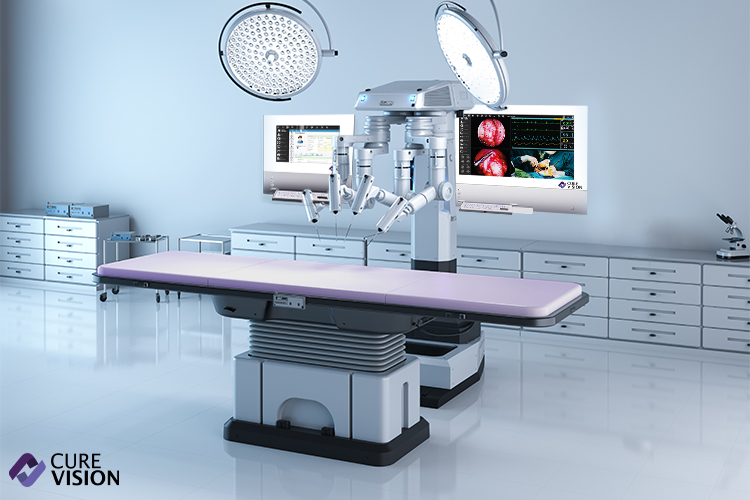How do hybrid, integrated, and digital operating rooms differ?

Although the terms may sound similar, they differ in how they are used in conjunction with technology and data. The purpose of hybrid, integrated, and digital operating rooms is to enhance surgical safety and simplify workflow for surgeons and surgical teams to improve patient outcomes.
There are many different interpretations of "operating room integration" from one hospital to another. For this reason, we have identified the operating room types to ensure everything is clear.
To understand hybrid, integrated, and digital ORs, let us first examine the standard, nonintegrated OR.
The preoperative information for each case and patient in nonintegrated operating rooms must be provided on paper or digitally on different devices before surgery. Furthermore, the floor is littered with cables and cords, providing a particular risk of snagging, accidental pulling, or damage to surgical equipment during the procedure.
- How do hybrid operating rooms work?
Hybrid operating rooms refer to a brand-new concept of operating rooms in which state-of-the-art imaging and medical equipment are used simultaneously. It is a cutting-edge operating room that integrates a fully functional surgical suite with devices such as a C-Arm system, a CT (computerized tomography) and MRI (magnetic resonance imaging). As a result, it is possible to perform radiology and surgical procedures simultaneously in a hybrid operating room. A hybrid operating room has also benefited from sophisticated technological instruments that enable advanced diagnostics and interventions to take place in the operating room.
In addition to being a versatile operating room equipped with a variety of surgical equipment, hybrid operating rooms are also referred to as multifunctional operating rooms.
- How does an integrated operating room work?
An integrated operating room can have a central console responsible for controlling special equipment such as patient information systems, audio systems, video systems, surgical and room lights, operating room automation, and imaging devices. As a result, the operator of an integrated OR can control multiple devices from one console and has a greater degree of control over the system.
- How does a digital operating room work?
Digital operating rooms integrate images, information, and workflow from the operating room into the hospital's systems. In addition, it is capable of distributing and recording information as well as adding intelligence. As the data is linked to a single device in the operating room, it can be displayed in various ways beyond simply displaying device control and software information.
As a result, the digital OR structure record, collect and transmit clinical image data within the OR to the hospital's information technology system, which is stored centrally. As a result, the surgeon can control the operating room data according to the specified screens' desired setup. Furthermore, it can display images from various sources on a single screen.
From the perspective of surgical quality and safety, a review of the benefits of image distribution within and outside the operating room (routing and switching), information integration, image and video registration and intelligence are presented. Moreover, the digital OR is expected to facilitate surgical training and teaching and improve surgical quality.
Experience the digital operating room concept with CureVision Operating Room Integration System.
A digitally integrated operating room must incorporate the most recent technological advancements.
CureVision's Operating Room Integration System combines all operating room devices into a single device to improve teamwork, efficiency, and central control. As a result, the following benefits are maximized:
- Patient Safety,
- Increasing the efficiency of operating room staff.
- Utilizing Time-Material and Billing Management to reduce costs.
- Patient Satisfaction Is Increasing Parallel to Operational Success.
- Enhancing the preference for and use of operating rooms.
- Education and Congress Functions in Hospitals.


